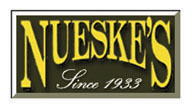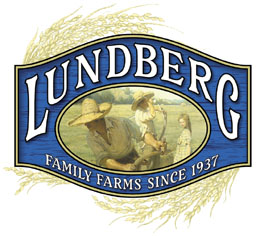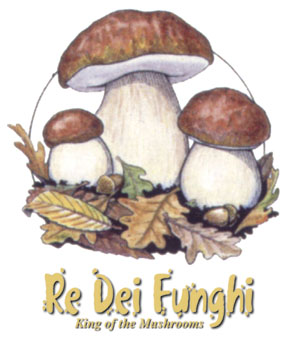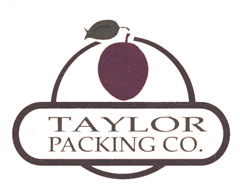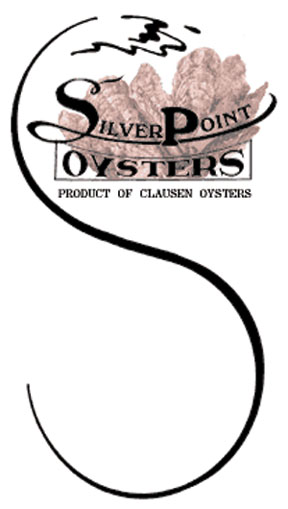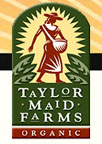| Photos
and Story by Mary Buttaro
If
you think foraging for exotic mushrooms is only for the
experienced, think again! Join beginning forager Mary Buttaro,
with experienced forager Loraine Berry, as they trek through
the forests of Mexico's smallest state, Tlaxcala. Organized
by Mexican Mushroom Tours, beginners and advanced foragers
alike pick, cook, and learn about native life styles that
flourish under an economy that benefits from mushroom foraging.
A
Mycological Expedition
For
one week in late August, with temperatures in the 70's,
four of Mexico's eminent mycologists lead our group into
the forests. Indigenous guides help us find the edible treasures,
show us the way through the dense growth, and keep us from
getting lost in the forest.
|
Click
on Images for Captions |
Home
base for the trip is the city of Tlaxcala, founded in 1527
by Franciscan friars, surrounded by 15,000—foot peaks,
lies in a volcanic belt that runs from the Pacific to the
Gulf coasts. The state's natural beauty and surprising biodiversity—rolling
plains, grassy meadows, cool pine and oak forests, waterfalls,
and majestic mountains—offer a spectrum of outdoor
pleasure. For mushroomers in particular, the temperate climate,
arboreal variety, and plentiful seasonal precipitation produce
spectacular foray locations. Additionally, this unique epicenter
of biodiversity spawned the development of the University
of Tlaxcala's Laboratory of Mycology, which is devoted to
the study of Mexican fungi.
While
some of the mushrooms found here also grow in the United
States, many can be found nowhere else in the world. New
varieties continue to be discovered. Ten thousand varieties
are estimated to exist in Mexico. Thus far, about six hundred
have been identified in this area. Some years ago, there
was great excitement in the mycological circles when a Hydnum
Regalias, a species first described from the Royal Gardens
in Kensington, actually turned out to be a Mexican native.
It traveled in a mycorrhizal relationship with a Mexican
tree that was planted many years before in the English arboretum.
Depending
on seasonal rains, mushrooms begin to appear in May and
can extend into October and even November. Each fungus has
requirements for its growth. Many mushrooms are mycorrihizal,
having symbiotic relationships with certain plants. Some
are parasitic and still others are cosmopolitan, growing
everywhere.
The
sky is particularly interesting to watch. Each day, the
deep blue, cloudless sky is gradually populated with billowy
white clouds that change and darken to a dramatic deep gray
as the daily rainstorm approaches. Sky watching, an important
activity during the foray, saves us from being surprised
by a sudden change in the weather. Every afternoon rain
pounds down for an hour, then makes way for clear skies.
The daily gift of rain keeps this area very productive.
Mushroom
Culture
The
heavily forested slopes of La Malinche, one of the four
volcanoes in the Tlaxcala area, rich with many species of
fungi, have blessed indigenous Indian groups with their
bounty for hundreds of years. Mushroom collecting is an
ancient tradition with deep cultural significance, dating
back at least two thousand years in this region. Ethno mycologist
Adriana Montoya, studies the modern day mushroom culture
of these Indians, and shared her findings with our group.
Although mushrooms are gathered for sale and are very important
to the local economy, Adriana has found that native people
also use mushrooms for food, tinder, cosmetics, insecticide,
medicine, and ornaments.
Mushroom
gathering is a family affair that includes even very young
children. By accompanying parents during mushroom forays,
children learn to recognize the most desirable varieties
and learn the secrets of where to find them in the forest.
One of our guides, Guadalupe, carries her month old daughter
with her as we tramp through the forest where she spends
much of her time. Her two preschool children accompany another
female guide.
Walking
through Javier Mina, we happen upon people engaging in the
food dehydrating process used in this remote area. On tarps
in a roadway, beans, mushrooms, corn, and seeds dry in the
sun. When drying is complete, villagers sack their goods
for shipping. Mushrooms gathered in this area are sent to
local markets and to Mexico City, where they continue on
to brokers in Paris, Buenos Aires and Milan. This wonderful
cottage industry makes it possible for the indigenous people
to continue to live in some of the most spectacular geography
on earth.
Mushroom
Foraging
Each
day's foray yields different species of fungi depending
on the type of forest visited. We collect at elevations
of 8,500-10,000 feet in areas where access is often difficult.
Steep slopes and slippery embankments test our mettle. The
group is quickly becoming rather like a family, sharing
fun and sometimes helping each other survive. Usually, we
ride in a small bus but, on the trip to Cañada Grande,
we transfer to the back of a dump truck for the last two
kilometers. The driver navigates a dry, rutted streambed
to reach our destination. Hanging on to the sideboards as
the truck sways and bumps along, the group ducks on cue
to avoid the low tree branches. Deep into the forest the
truck stops, we climb out of the truck and fan out to begin
the mushroom hunt.
Two
hours later, the truck horn sounds three times, the signal
for us to return to the truck and enjoy lunch in the forest.
Rogelio Salas, once owner of a restaurant in Mexico City,
coordinates our meals. Watermelon juice and wild mushroom
tamales made with blue corn are the group's favorite. Local
peaches are in season, and are served for dessert. They
are quite small but delectable.
As
a beginner, I collect every mushroom I see and carefully
place it into my foray basket with great excitement. In
a few days, with more knowledge, I gather selectively according
to my own personal scale. I pick the choicest, most unusual,
largest, prettiest, smallest and species unknown to me.
At day's end, the group's collecting effort is studied.
Identification tables are set up by our expert mycologists,
with knowledgeable trip members assisting.
Loraine
Berry, who has been interested in mushrooms for at least
forty years, and is here to learn even more, assists with
the identification task. Through a process of consultation,
debate and research, the specimens are labeled with Latin
and local names.
Mushroom
spores are examined under a microscope for any specimens
defying identification by other means. To quote Nance, one
of our trippers, "looking at spores under a microscope
was not something I thought of as a vacation plan, but once
you took a close look they were so interesting! Some of
those tiny spores have ventriculated surfaces so that they
can attach themselves to any hapless creature or bit of
passing debris." The mycologists continue their work
late into the evening, investigating, photographing, and
cataloging the day's foray result to add to their research
data.
The
local people collect sixty edible mushroom species. Although
we do not find that many, we collect enough edibles each
day to feast on. Once the genus and species of a particular
mushroom has been established and everyone has looked over
the day's foray results, the best tasting mushrooms are
transferred to the kitchen. The gracious staff at La Escondida
allow us to invade their rustic kitchen to prepare our "tasting".
The night I assist, we prepare Boletus luridiformis, Lactarius
salmonicolor, Boletus pinophilus (pante), Clavariadelphus
truncatus, Tricholomata clitocybe gibba, Cantharellas, Hygrophorus
chrysodon (huevito) and Helvella crispa (oreja de padre).
These are prepared simply, sautéed separately with
a little butter and salt, to allow the individual flavors
to be appreciated. Loraine Berry, very experienced with
mushroom identification and preparation, says that "they
may be edible, but some mushrooms are not incredible".
She was right, they were not equally delicious.
Native
Cuisine
The
professional cooks use our wild mushrooms, local blue corn,
squash blossoms, nopal cactus leaf, and other local produce
in preparing our meals. This area of Mexico is well known
for its sauces, but my personal favorites are Crema de Flores
de Calabaza (Cream of Squash Blossom Soup), flavored with
chiles and goat cheese, and Puerco Almendrado con Hongos
(Almond Pork with Mushrooms), combining flavors of almonds,
chiles, mushrooms and cinnamon. The recipes for these two
dishes follow.
On
the fifth day, base camp moves to the northern limits of
the state to a picturesque rustic mountain resort, Al Final
de La Senda (literally: "the end of the trail").
We foray on the lodge's hilly 80-acre fungi-rich property
and find one of the most unusual specimens of our trip,
a Sparassis crispa, whose shape and size closely resemble
a bouquet of wide egg noodles about the size of a full grown
cauliflower. A small piece is trimmed from the bottom for
further study while the rest is cooked for our appreciation
that evening. This particular mushroom, it seems, is best
stewed in chicken broth and has a very delicate flavor.
One
of the most interesting culinary experiences we had was
a savory Mixote luncheon. Mixote is complex to prepare.
Lamb pieces and flavoring are wrapped together in a special
paper that resembles the skin of the Maguay cactus—which
was originally used to prepare this dish until it became
too scarce. The packages are then buried with heated stones,
and cooked under the ground for many hours. The result is
tender, succulent and tasty. The region's famous Pulque,
femented Maguay cactus juice, is served with this traditiional
meal. Our mycologists consume glass after glass of this
healthful drink but one small taste and I am back to red
wine.
The
final day, was R & R (rest & relaxation), at the
elegant downtown hotel, the Posada San Francisco in Tlaxcala.
Right on the main square, the hotel is a few blocks from
the overwhelming, Saturday market. Shopping, at last! The
stalls are colorful, the area crowded with families eating,
shopping and relaxing. I manage to snag a great pair of
silver and brass earrings, my only purchase.
The
farewell dinner at la Cacerola, one of the top restaurants
in the city, is a short walk from the hotel. For the first
time in a week I dress up. Everyone is splendid in their
finest. We eat, drink, joke, take pictures, visit, and listen
to pre-Hispanic music (Peruvian) as we say goodbye to each
other.
Looking
back, the trip was more than I expected.It was challenging,
exposed me to interesting people, gave me deeper cultural
understanding and I know oh, so much more about mushrooms.
The next Mexican mushroom adventure may be Copper Canyon.
If this sounds like fun to you, come on along!
Mary's
Favorite Recipes
Crema
de Flor de Calabacitas
Courtesy Mexican Mushroom Tours
(Click
on recipe in Other Great Links
to get recipe)
Puerco
Almendrado con Hongos
Courtesy Rogelio Salas Silva
(Click
on recipe in Other Great Links
to get recipe)
For
information about mushroom trips contact:
Mexican Mushroom Tours
Gundi Jeffrey & Erik Purre Portsmouth, Founders
& Operators
HYPERLINK "http://www.mexmush.com/"
www.mexmush.com/
Other
Great Links:
Foraging
for Mushrooms in Mexico Recipes
Crema
de Flor de Calabacita
Puerco
Almendrado con Hongos
Related
Articles:
Trail
Food
Who's
Who in Mexican Mushroom Tours
|



















